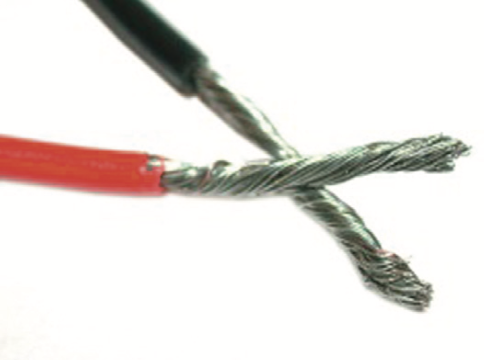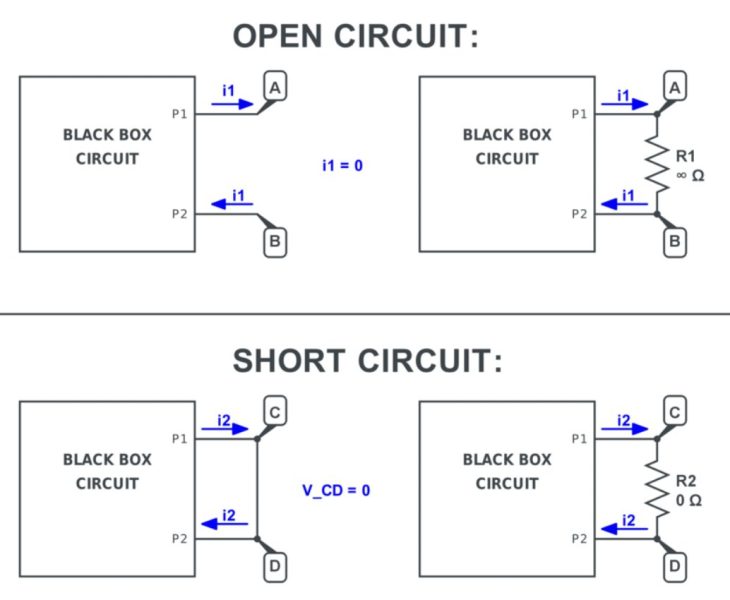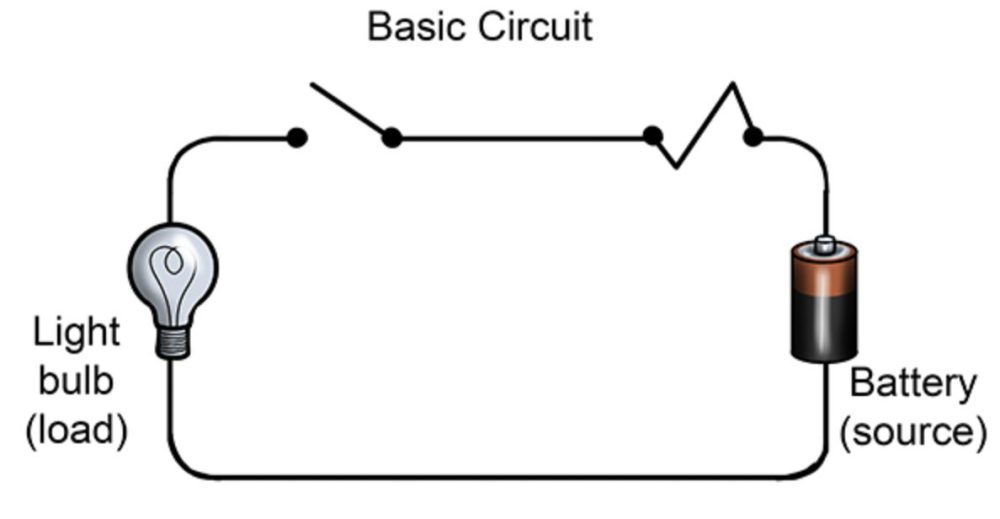When dealing with electrical circuits, it’s essential to understand the concepts of short circuits and open circuits. Both of these phenomena can cause damage to electrical systems and equipment, and they can also pose safety hazards. In this blog, we’ll explain what short circuits and open circuits are, how they happen, and how to prevent them.

What is a Short Circuit?
A short circuit occurs when an unintended connection is made between two points in an electrical circuit that have a low resistance path, bypassing the normal load or current path. This leads to a sudden surge in current, which can cause overheating, sparks, and even fires.
Short circuits can happen due to a variety of reasons, such as damaged or faulty wiring, worn insulation, or accidental contact between wires. They can also happen due to equipment failures, such as when a motor seizes, a transformer shorts or a diode fails.
In addition to causing fires and equipment damage, short circuits can also pose safety hazards to people working with or near electrical equipment. If you suspect a short circuit, it’s important to shut off the power supply and get professional help immediately.
What is an Open Circuit?
An open circuit is the opposite of a short circuit. In this case, there is an interruption in the current path of the circuit. This means that no current can flow through the circuit, and the system or equipment will not function.
Open circuits can happen due to damaged or broken wires, loose connections, or faulty switches. They can also occur due to environmental factors such as humidity, dust or corrosion.
An open circuit can often be diagnosed by checking for continuity between two points in the circuit with a multimeter or other testing equipment. If there is no continuity, this indicates that there is an open circuit, and the problem can be identified and repaired.

Preventing Short Circuits and Open Circuits
Preventing short circuits and open circuits is essential for ensuring the safety and longevity of electrical systems and equipment. Here are some tips to help prevent these problems:
- Use high-quality wiring and equipment that meets safety standards.
- Keep wiring and equipment well-maintained and free from damage.
- Avoid overloading circuits with too much current or power.
- Ensure that switches and other components are properly installed and functioning.
- Perform regular inspections and testing to identify and repair potential problems before they cause damage or safety hazards.
In conclusion, short circuits and open circuits are common electrical problems that can cause damage, safety hazards, and downtime. Understanding how these phenomena occur and taking steps to prevent them is crucial for ensuring the safety and functionality of electrical systems and equipment. By following the tips outlined in this blog, you can help prevent short circuits and open circuits and keep your electrical systems running smoothly.

Short Circuits:
- Short circuits are typically caused by a low-resistance connection between two points in an electrical circuit.
- This connection creates a path for the current to bypass the normal load, resulting in an uncontrolled surge in current flow.
- The sudden surge in current can cause wires to overheat and potentially melt, resulting in sparks and fires.
- In addition to damage to electrical equipment, short circuits can also be a safety hazard for people working with or near the equipment.
- Some common causes of short circuits include damaged wiring, worn insulation, accidental contact between wires, and equipment failures such as motor or transformer shorts.
Open Circuits:
- Open circuits occur when there is a break or interruption in the current path of an electrical circuit.
- This interruption prevents current from flowing through the circuit, resulting in the equipment or system not functioning.
- Open circuits can be caused by a variety of factors, including damaged or broken wires, loose connections, faulty switches, and environmental factors such as humidity, dust, or corrosion.
- Identifying and repairing open circuits is usually done by checking for continuity between two points in the circuit with a multimeter or other testing equipment.
- Open circuits can also be a safety hazard, especially if the interrupted circuit is intended to provide power to critical equipment such as medical devices or security systems.
Preventing Short Circuits and Open Circuits:
- Preventing short circuits and open circuits is critical for ensuring the safety and functionality of electrical systems and equipment.
- Some steps to prevent short circuits and open circuits include using high-quality wiring and equipment that meets safety standards, keeping wiring and equipment well-maintained and free from damage, avoiding overloading circuits with too much current or power, ensuring that switches and other components are properly installed and functioning, and performing regular inspections and testing to identify and repair potential problems before they cause damage or safety hazards.
- In addition to these preventive measures, it’s also important to have a plan in place for dealing with short circuits and open circuits if they do occur. This may include shutting off power to the affected equipment or system, evacuating the area if necessary, and contacting professionals for repairs or maintenance.

Short Circuits:
Advantages:
- Short circuits can sometimes be beneficial in certain electrical systems. For example, in some electrical protection systems, a short circuit can activate a circuit breaker or other protective device, preventing damage to the equipment.
- Short circuits can also be useful in certain electrical tests and diagnostics, where the sudden surge in current can reveal problems or defects in the equipment or wiring.
Disadvantages:
- In most cases, short circuits are unwanted and can cause damage to electrical equipment and pose safety hazards to people working with or near the equipment.
- Short circuits can cause fires and other forms of damage, which can result in downtime, costly repairs, and potential injury or loss of life.
Open Circuits:
Advantages:
- Open circuits are generally not desirable in electrical systems. However, they can sometimes be beneficial in certain situations. For example, open circuits can be used in safety systems such as emergency stop buttons or kill switches to quickly interrupt power and prevent injury or damage.
Disadvantages:
- In most cases, open circuits are unwanted and can cause equipment or systems to stop functioning, resulting in downtime and potentially costly repairs.
- Open circuits can also be a safety hazard if they interrupt critical systems such as medical devices or security systems.
- Identifying and repairing open circuits can be challenging and time-consuming, requiring specialized equipment and expertise.
Overall, both short circuits and open circuits are generally considered to be unwanted electrical phenomena that can cause damage, downtime, and safety hazards. Preventing these issues through regular maintenance, proper installation, and safety measures is crucial for ensuring the safety and functionality of electrical systems and equipment.








